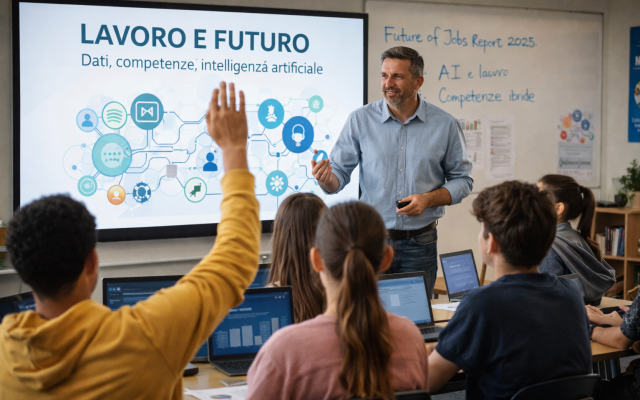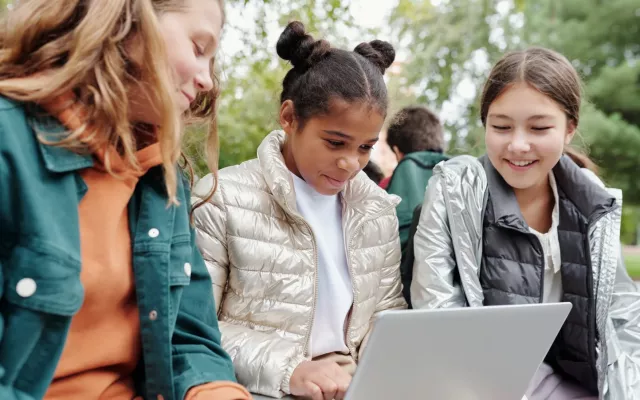Breaking Barriers, webinar for teachers with researcher Alessandra Rossi
How do intelligent behaviours develop in robots? Is it possible to learn how to do this even without any programming experience, perhaps starting with a visual language such as Scratch?
Tomorrow, Friday 11 July, from 4 to 6 p.m., we will try to answer these questions in the webinar “Developing behaviours for robots with Scratch”, led by Alessandra Rossi, researcher at the University of Naples Federico II and protagonist of numerous international projects in the field of human-robot interaction. The initiative is part of the Breaking Barriers programme, promoted by the Fondazione Mondo Digitale in collaboration with Google.org, to overcome educational barriers through inclusive and intelligent technologies.
‘My goal is to help teachers and students understand how robots work, but also to see artificial intelligence as a creative tool with which you can play, learn and build something useful,’ says Alessandra.
Robotics as an ally in teaching
During the webinar, participants will learn about:
- the basics of artificial intelligence and computational logic;
- the principles of human-machine interaction;
- how to build simple but meaningful robotic behaviours;
- the use of the Scratch language to control robots and interactive objects, even in the classroom.
Each teacher will receive:
- a teaching sheet to replicate the activity;
- a complete presentation of the content;
- a recording of the webinar to review or share the experience;
- a micro certification after classroom experimentation.
Interview with Alessandra Rossi
What was your background and how did you come to work in the field of human-robot interaction?
I studied Computer Science at Federico II and became interested in robotics during my master's degree, choosing courses on artificial intelligence and intelligent agents. After my thesis in robotics, I continued with a PhD in England and now I work at the Prisca Lab at Federico II, where we carry out social robotics projects.
Why is it important to talk about artificial intelligence and robotics at school?
Because we live in an age where AI is transforming every aspect of our lives: communication, healthcare, industry, art. Understanding it also means knowing how to distinguish between what is real and what is artificially generated. Furthermore, these technologies help us develop logical thinking, planning and creativity.
Scratch is often used to teach programming to children. What makes it useful in robotics too?
It is visual, intuitive and uses coloured blocks, making it easily accessible even to those who have never programmed before. It also integrates well with hardware and allows for practical and engaging learning.
What will teachers participating in the webinar learn?
The theoretical basics of what a robot is, how it is composed and how it can interact with the environment and with people. They will then put everything into practice by creating simple robotic behaviours.
A quote for those who are curious to get started?
‘Whatever you want to do, or dream of doing, start it. Start it now. Boldness has genius, power and magic in it’ (Goethe)
Who inspired you on your journey?
Books such as Asimov's The Three Laws of Robotics, films such as The Bicentennial Man, but above all my mentor, Silvia Rossi.
What is the biggest challenge for you today?
Creating robots that can truly adapt to people, understand context, emotions and expectations, and personalise their behaviour in a dynamic way.




